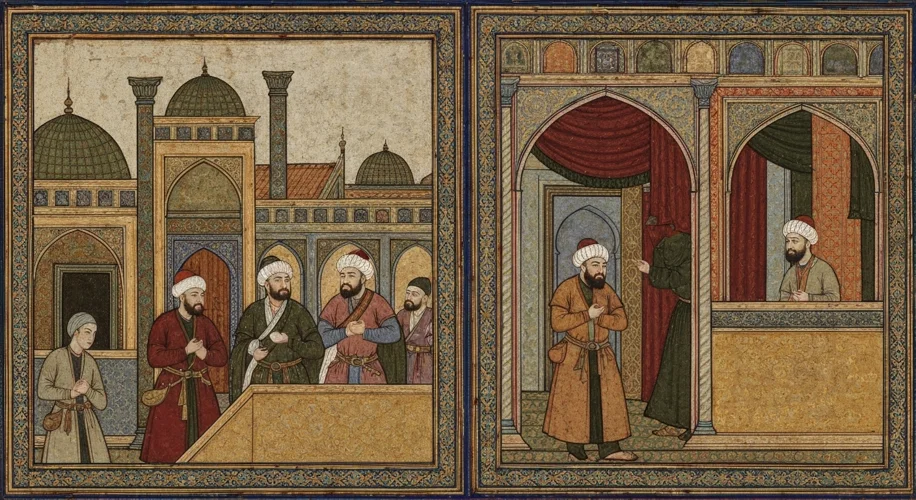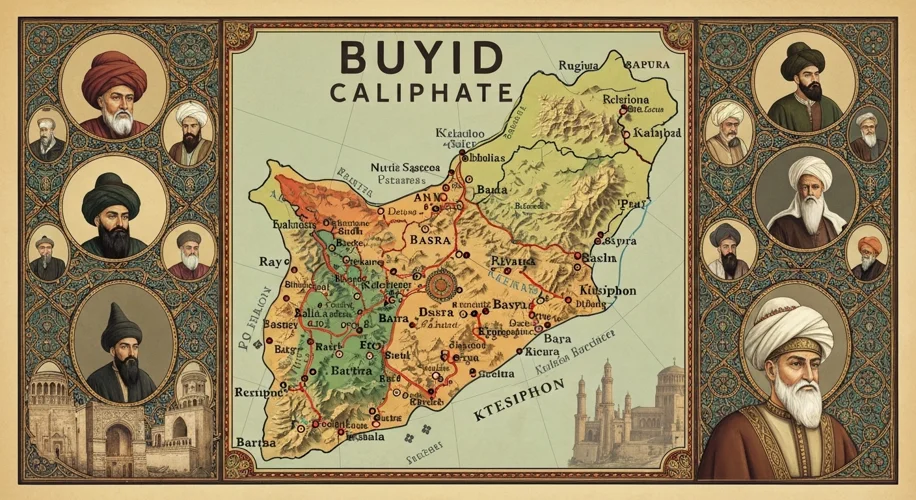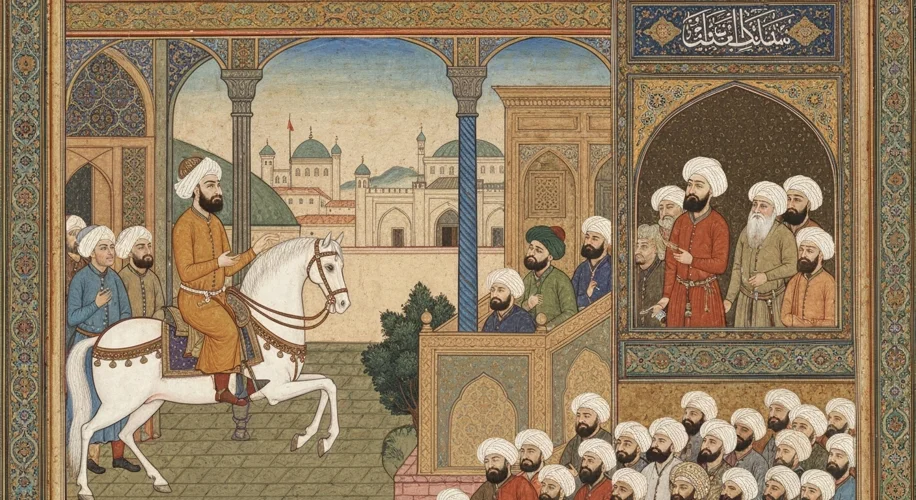Imagine this: the twilight years of the Abbasid Caliphate, a once-mighty empire now a shadow of its former self, its caliphs mere figureheads. Into this fragmented landscape emerged a new power, one that would reshape the political and cultural map of the Middle East for over a century. These were the Buyids, a dynasty of Persian Shia descent who, from their mountainous homeland, rose to command the very heart of the Islamic world.
Our story begins in the rugged mountains of Daylam, a region in northern Iran known for its fiercely independent and hardy people. It was here, in the 10th century CE, that the Buyid brothers – Ali, Hasan, and Ahmad – hailing from a humble fishing family, began their meteoric rise. They were Zaydi Shia Muslims, a branch of Shia Islam that differed from the more prevalent Imami Shia of later centuries, but their faith would become a defining characteristic of their rule, particularly in contrast to the Sunni Abbasid Caliphate they would eventually dominate.
The historical context for their ascendancy was a period of profound decentralization in the Abbasid Caliphate. Following the Caliphate’s Golden Age, regional governors had become increasingly powerful, establishing independent or semi-independent dynasties. The Buyids, skilled warriors and astute politicians, capitalized on this weakness. They were part of a broader trend of Turkic and Persian military elites gaining influence, but their unique Persian identity and Shia leanings set them apart.
The key actors in this drama were, of course, the Buyid brothers themselves. Ali, the eldest, initially led the movement, but it was Ahmad who truly forged the dynasty’s destiny. In 932 CE, he captured the important city of Qazvin, marking the beginning of their westward expansion. His brother Hasan secured control of Fars, the heartland of ancient Persia, and it was Ahmad who ultimately marched into Baghdad in 945 CE. This wasn’t a conquest in the traditional sense; the Abbasid Caliph, Al-Mustakfi, was forced to acknowledge Ahmad as his Amir al-Umara (Emir of Emirs), effectively making him the secular ruler, while the Caliph retained only spiritual authority. This created a peculiar dual-power structure that would characterize Buyid rule in Baghdad.

The Buyids did not merely conquer; they consolidated and ruled. They established a sophisticated administration, drawing heavily on Persian bureaucratic traditions. Their reign saw a revival of Persian culture and language, with Persian poets and scholars patronized. Cities like Shiraz flourished under their rule, becoming centers of learning and culture. However, their Shia identity also created tensions. While they were generally tolerant of the Sunni majority, their ascendancy was a blow to the Sunni Abbasid establishment. They appointed Shia judges and officials, and their coins sometimes bore Shia inscriptions, subtly asserting their religious identity.
The Buyid-Hamdanid War, a complex series of conflicts and alliances in the mid-10th century, saw the Buyids clash with the Hamdanids, another powerful dynasty that had carved out a state in northern Syria and Iraq. This struggle for dominance over the fertile lands of Mesopotamia and control of the Abbasid Caliphate was a critical period, showcasing the military prowess and strategic ambitions of both sides.
Internally, the Buyid dynasty was not monolithic. It eventually split into several branches ruling different territories, with Baghdad being the most prestigious. The rulers in Fars, often considered the senior branch, maintained a distinct Persian identity, while the rulers in Iraq were more directly involved in the Caliphate’s affairs. This internal division, combined with external pressures from rising powers like the Ghaznavids and later the Seljuks, eventually led to their decline.
The consequences of Buyid rule were significant. They effectively ended the period of direct Abbasid military control, paving the way for future Turkic dynasties to exert similar influence. Their patronage of Persian culture helped ensure the survival and flourishing of Persian language and literature during a period when Arabic was the dominant language of administration and scholarship across the Islamic world. They also played a role in the complex sectarian landscape of the Middle East, their Shia rule in Baghdad having long-term implications for the region’s religious and political dynamics.

Analyzing their impact, the Buyids represent a crucial transition in Islamic history. They were not simply conquerors but cultural inheritors and innovators. Their administration, their patronage of the arts and sciences, and their unique position as Shia rulers within a Sunni framework left an indelible mark. They demonstrated that power could shift from Arab elites to Persian and Turkic military leaders, a trend that would define much of subsequent Islamic history.
Little did the humble fishermen of Daylam know that their sons would one day hold the reins of an empire that had once stretched from the Atlantic to the Indus. The Buyids, a dynasty born of the mountains, carved their name into the annals of medieval Iran and Iraq, proving that even in the shadow of a declining caliphate, new powers could rise and reshape destiny.


